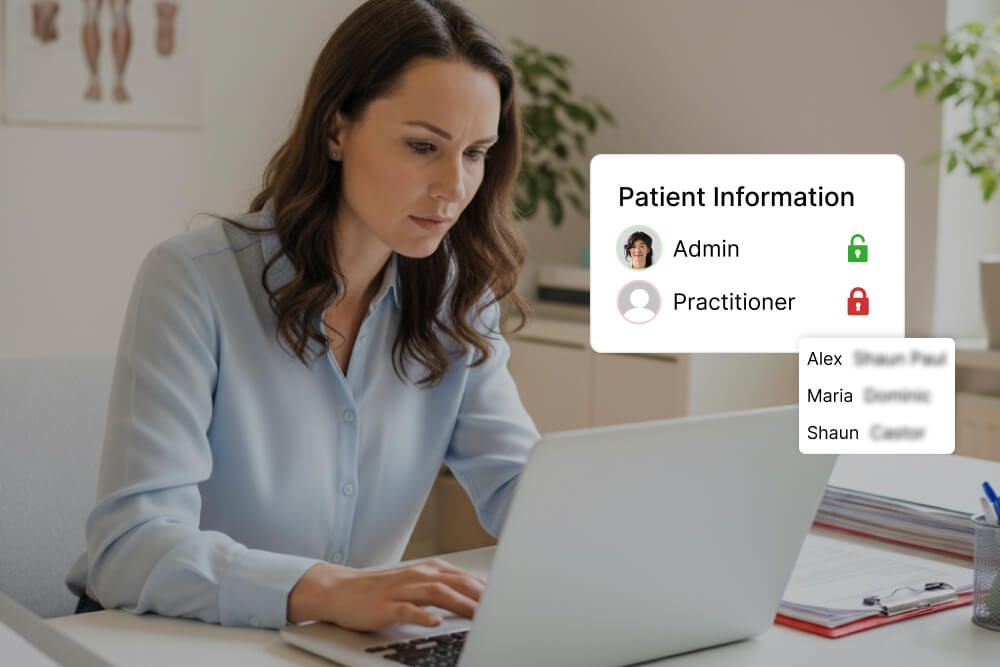Pricing Update & Annual Discounts:
Learn More
Table of Contents

Experience Better Practice Management Today!
Starting at $28.05/month
No Credit Card Required

Experience Better Practice Management Today!
Starting at $30/month
No Credit Card Required
Client poaching hits smaller and growing clinics the hardest. Losing a practitioner is tough, but watching clients leave with them can be even more painful.
It’s emotional. It’s financial. And it can shake the stability of your practice.
This blog will help you protect your clinic and client relationships with practical steps, legal safeguards, and systems that actually work.
You'll learn how to:
By the end, you’ll have a practical framework to protect your clients, your reputation, and the future of your clinic
.jpeg)
When defining the legal definition of client ownership in healthcare, let's clarify that clients don't technically belong to anyone. They're people, not property. But the relationships you've built with them and the access to their information? That's different. And that's what you need to protect.
When I talk about client ownership in healthcare, I'm talking about who has the right to maintain those relationships and access that data. It's not about controlling where clients go for care. It's about protecting the business you've built and the trust clients have placed in your clinic.
Here's what matters from a legal perspective.
The key is having these things in writing before anyone starts working for you. I've seen too many clinic owners learn this the hard way. They hire a great practitioner, build up their client base together, and never think to clarify who those relationships belong to. Then the practitioner leaves and takes half the clients with them.
The truth is, proactive protection is everything. You can't wait until someone gives notice to start thinking about this. You need clear policies from day one that spell out exactly how client relationships work in your clinic.
.jpeg)
If you're working as an employee practitioner, not an owner, the clients you see generally belong to the clinic, not to you.
That might sting a little if you're reading this as a practitioner. You've built great relationships with these clients. They request you specifically and trust you with their care. But here's why those relationships still belong to the clinic:
That's why many clinics include a clause in their employment contracts saying you can't contact clients if you leave. Even if you've built a great rapport with them, the relationship exists within the clinic's framework, not independently.
If you're an owner reading this: Make sure your employee contracts state this clearly. Don't assume everyone understands. Spell it out in black and white before someone starts treating clients.
If you're an employee: Ask to review your agreement before you assume anything about client relationships. Know what you're signing and what happens if you decide to leave. It'll save everyone headaches down the road.
The best way to protect your clinic is to combine clear contracts with the right systems. Here are some anti-poaching tips you can follow:
Your employment agreement is your first line of defence. If it's not in writing, it doesn't exist. Here's what needs to be in every contract:
My advice: prioritize a non-solicitation agreement rather than a non-compete. Have a local employment lawyer draft one tailored to your state. Investing a few hundred dollars here is worth the protection it provides.
The more clients feel connected to your clinic, not just one practitioner, the harder it is for them to leave. You can do this by:
.png)
.png)
A massage therapy clinic with 30 therapists and 20+ years in business made data protection a priority. Using Noterro, staff could only see first and last names, not phone numbers, emails, or addresses. This prevented client lists from leaving with departing staff.
Every therapist also signed a contract stating that removing client data meant immediate termination. Still, the clinic allowed staff to inform clients of their new location when appropriate.
Their advice to fellow clinic owners: establish clear agreements from the start. It safeguards the business and keeps team relationships fair.
Contracts are just the start. Your team needs to understand the bigger picture of how your clinic operates.
Create a clinic-wide code of conduct that covers client communication. Be specific about what's okay and what's not.
Put it all in writing.
Your onboarding process should cover these boundaries from day one. Don't wait until someone has been working for six months to mention they shouldn't text clients from their personal phone. Set the expectations early. Walk through real scenarios. Make sure everyone understands.
This clarity pays off when someone does leave. There's no confusion about what they can and can't do, and clients don't get mixed messages. The transition stays professional, and everyone knows where the boundaries are.
You can't protect what you can't see. If you don't know what your employees are accessing or sharing, you're flying blind. With Noterro, you get control over exactly what each person can see and do:
It is more about protecting your business than not trusting your team. When all your documentation and communication run through one central system, nothing gets lost, nothing disappears when someone quits, and everything stays exactly where it should be.
Sometimes, despite your best efforts, a former employee contacts your clients. Here's what to do:
I had one practitioner leave, and they immediately started a social media campaign targeting our clients. Instead of getting into a public fight, we sent a simple email to our client list.
We announced that our new practitioner was joining the team. We highlighted our years of service to the community. We offered a special package for returning clients. Most came back within a month.
The key is staying calm and professional. Clients will respect how you handle it. And that respect keeps them coming back to your clinic.
Client relationships in a clinic belong to the clinic. Not the individual practitioner. The good news is that protecting your clinic doesn't require paranoia or complex legal battles. It just needs the proper foundation:
With tools like Noterro's access controls and branded client communications, these protections become part of your daily operations. Set it up once and run it forever. Sleep better knowing your client relationships are secure.
So, start today by reviewing your employment contracts and locking down your client data. Your future self will thank you for it.
Stay professional. Remind them their records and care remain secure with your clinic, and highlight your team's continuity. You can support staff transitions reasonably, but your focus should be client trust and clinic stability.
Yes, Noterro lets you set role-based permissions. You can restrict staff to only the necessary information, including which practitioner treats which client.
You should start now. Write agreements with non-solicitation and confidentiality clauses. Even simple contracts provide a foundation to protect your clinic and clarify expectations with your staff.
Tags



